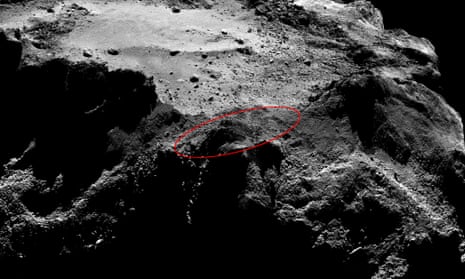The slumbering Philae comet lander could wake up any day now. During the coming week, the Rosetta mothership will make a series of close passes to the comet. On each occasion it will transmit a signal asking for Philae to respond.
The lander is currently receiving about twice as much sunlight as it did in November when it went into hibernation.
This could be enough to activate its transmitter. If this happens, engineers and scientists at the German Space Agency’s Lander Control Center in Cologne are ready to revive the science mission.
Philae landed in the shadows instead of in bright sunlight after a bumpy landing that saw it wedge itself at an angle in a ditch or close to a rock face. After three days of operation, in which it completed more than 80% of its science mission, it shut down.
It is hard-wired to use the light falling on its solar panels to warm itself and it only needs 5.5 watts of power to boot up. At this point, it begins warming itself further and charging its battery. When the power level reaches 19 watts and the internal temperature rises to –45°C, then it can talk to the Rosetta orbiter.
As the comet gets closer to the Sun, Philae will generate more and more power. Although it receives only 1.3 hours of sunlight during each 12.4 hour-day on the comet, Philae may eventually be able to charge its battery sufficiently to operate continuously for weeks or months.
More details can be found on ESA’s Rosetta blog.

Comments (…)
Sign in or create your Guardian account to join the discussion